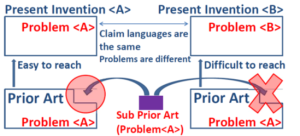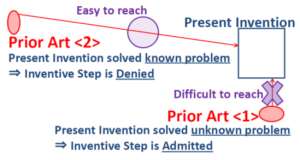1. Difference between the present invention and the main cited invention
The claimed invention “comprises an image rotating mechanism, which rotates only the X-ray image displayed on said display part, from among said X-ray images,” whereas the cited invention has no such specification.
2. Excerpt from the Judgements Concerning Inventive Step (underline mine)
“…it is sufficiently possible to evaluate, … the present invention is significant in that it focused on the convenience of the apparatus operator and newly took up the task of facilitating the adjustment of the image from the apparatus operator’s viewpoint as the problem to be solved.
…it cannot be said that there is motivation to adopt the difference from the cited invention to the configuration of the present invention on the assumption that the above-mentioned tasks are encountered. Furthermore, there is an error in the finding of Technical Matters 2 in the JPO Decision, and it cannot be said that the configuration which consist of the difference from the cited invention is conceived from the matters described in Cited Document 2 (technical matters 2′).”
3. Some Consideration
In an overview of recent court cases, there are many cases in which the court has denied the easily-conceived property (recognized inventive step) of combining a main cited invention and a secondary cited invention to conceive a present invention on the ground as one of the reasons that a problem to be solved by the present invention and a problem to be solved by the cited invention differ from each other.
As practitioners, we need to be aware of this trend in court cases in our practice. (For reference, the practice of the United States is different from that of Japan. Even if a problem to be solved by a present invention is different from a problem to be solved by a cited invention, the court judges it to be “obvious” in the case that it is easy to combine the main cited invention and the secondary cited invention and thus the combination results in the structure of the present invention. Foreign trends in each issue are also of practical importance.)
Based on the above, the following figure shows that inventive step determination may differ depending on a problem to be solved by a present invention even if a main cited invention and a secondary invention are the same.


Writer: Hideki TAKAISHI
Supervising editor: Kazuhiko YOSHIDA
Hideki TAKAISHI
Attorney at Law & Patent Attorney
Nakamura & Partners
Room No. 616, Shin-Tokyo Building,
3-3-1 Marunouchi, Chiyoda-ku,
Tokyo 100-8355, JAPAN